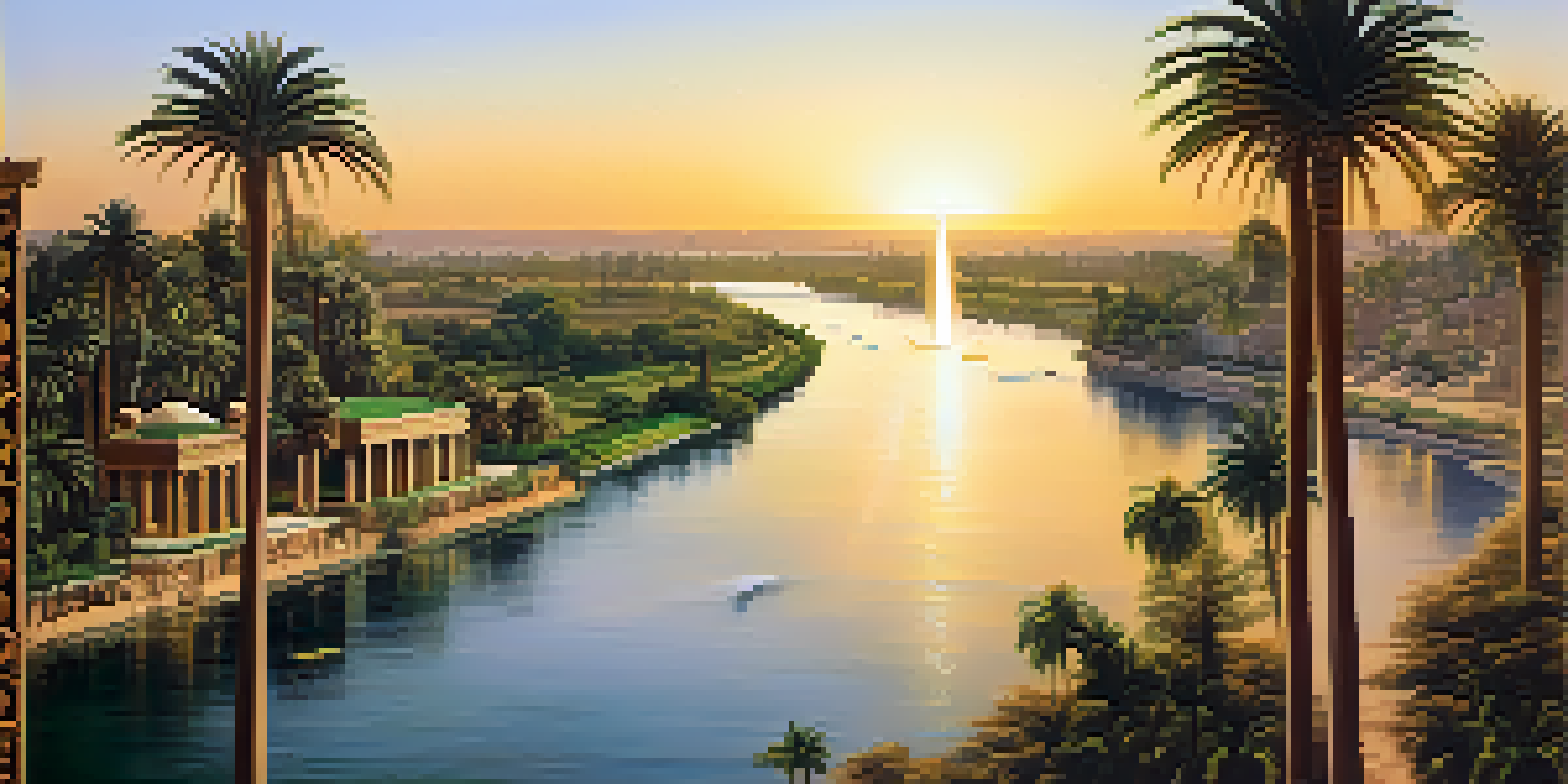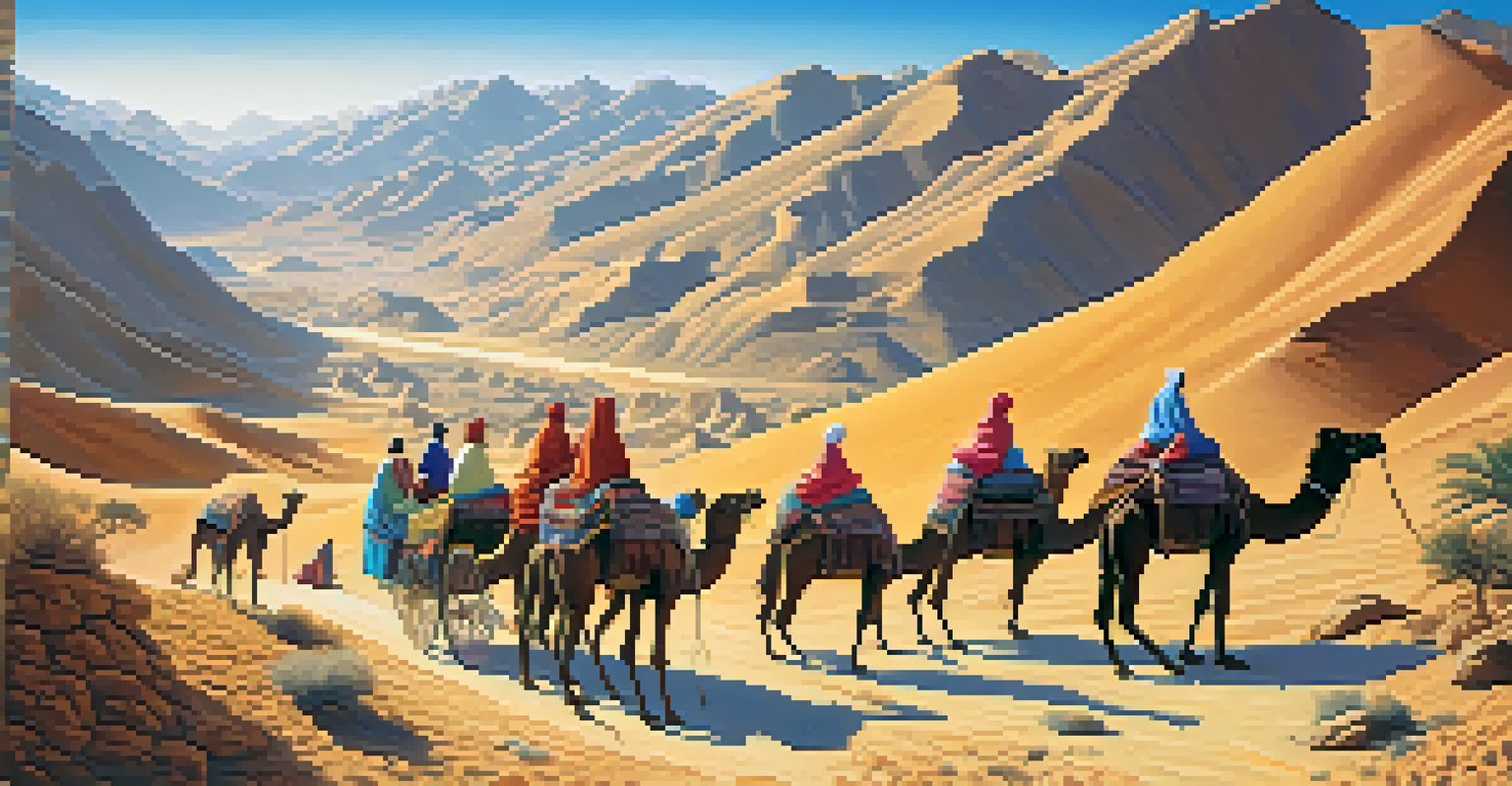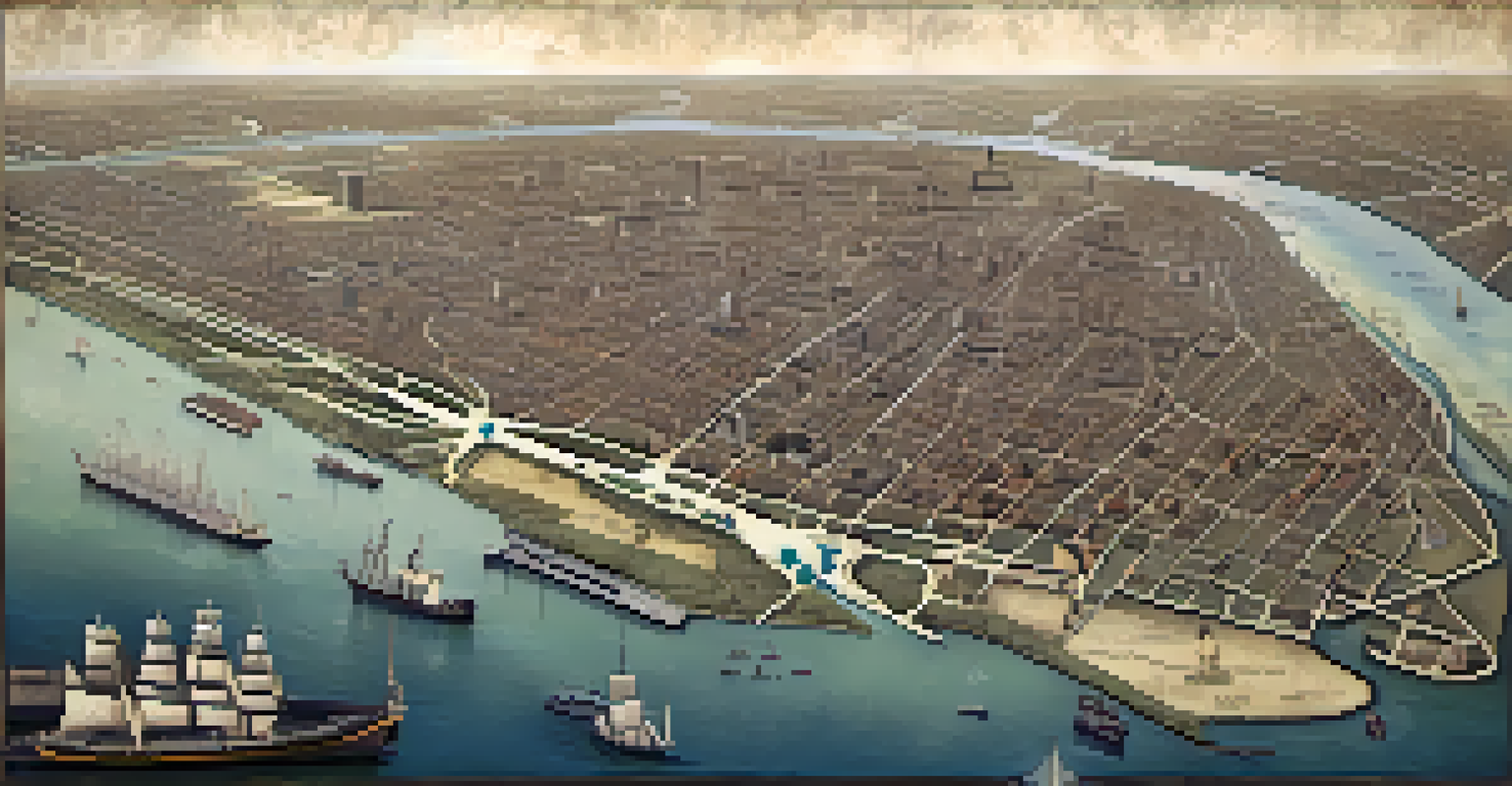History and Geography: Understanding the World Together

The Interconnectedness of History and Geography
History and geography are like two sides of the same coin. While history focuses on events, people, and cultures, geography provides the backdrop that shapes these narratives. Understanding this connection helps us appreciate how physical landscapes influence human actions and societal developments.
Geography is the stage on which history plays out.
For instance, consider how the Nile River's fertile banks supported ancient Egyptian civilization. The river not only provided a means for agriculture but also facilitated trade and communication. These geographical features were crucial in shaping the course of history in that region.
By exploring this interconnectedness, we gain insights into how geographical factors can lead to the rise or fall of civilizations. This perspective allows us to see the world as a complex tapestry, woven together by both historical events and geographical contexts.
Mapping Historical Events: The Importance of Geography
Geography is not just about maps; it's a powerful tool for understanding historical events. When we examine the geographic layout of a region, we can better comprehend why certain events unfolded as they did. For example, the location of major cities often coincides with trade routes or natural resources.

Take the Silk Road, for example. This ancient trade route connected the East and West, facilitating not just commerce but also cultural exchange. The geography of the region, with its mountains and deserts, created both challenges and opportunities for trade, ultimately shaping the history of multiple civilizations.
History and Geography Intertwined
The relationship between history and geography reveals how physical landscapes influence human actions and societal developments.
By mapping historical events through a geographical lens, we can uncover patterns and relationships that might otherwise remain hidden. This approach enriches our understanding of history and illustrates how geography influences human experiences.
Cultural Landscapes: How Geography Shapes Identity
Cultural landscapes are a fascinating intersection of geography and history. They reflect the ways in which human beings have interacted with their environment over time. From ancient ruins to modern cities, these landscapes tell us stories of cultural identity and collective memory.
History is a vast early warning system.
For instance, the terraced fields of the Andes reveal the ingenuity of the Inca civilization in adapting to their mountainous environment. This adaptation not only showcases their agricultural skills but also represents their deep connection to the land, which continues to influence their cultural practices today.
Understanding cultural landscapes helps us appreciate the diversity of human experiences across different regions. It allows us to recognize that geography does not merely serve as a backdrop; it actively shapes the identities and traditions of people.
Historical Geography: Tracing the Evolution of Places
Historical geography examines how places change over time, revealing the dynamic relationship between people and their environment. By studying historical maps, we can see how borders, cities, and landscapes have evolved, reflecting both natural and human influences.
Take, for example, the transformation of New Orleans. Originally a French settlement, the city's geography and cultural influences have shifted dramatically over the centuries. Understanding these changes helps us appreciate the complexities of its social fabric and the historical events that shaped its development.
Cultural Landscapes Shape Identity
Cultural landscapes reflect the interaction between humans and their environment, highlighting how geography shapes cultural identity and memory.
By tracing the evolution of places, historical geography provides valuable context for contemporary issues. It encourages us to think critically about how our environments are shaped by history, and how they, in turn, affect our present.
Globalization: The Intersection of History and Geography
Globalization illustrates the powerful interplay between history and geography in our interconnected world. As cultures, economies, and technologies spread across the globe, the geographical landscape transforms, often reshaping historical narratives. This phenomenon highlights the importance of understanding both past events and geographic factors.
For instance, the rise of the internet has transcended geographical boundaries, allowing for the rapid exchange of information and ideas. This global connectivity has historical roots in trade, colonization, and migration, each influencing how societies interact today.
Recognizing the role of geography in globalization helps us understand the complexities of modern issues such as climate change and migration. It reminds us that our world is interconnected, and our histories are often intertwined with the landscapes we inhabit.
Environmental History: Learning from Our Past
Environmental history delves into the relationship between humans and the environment over time, emphasizing the significance of geography in shaping historical outcomes. By studying this relationship, we can learn important lessons about sustainability and stewardship of our planet.
For example, the Dust Bowl of the 1930s serves as a stark reminder of how poor land management and geographic conditions can lead to environmental disaster. Understanding the historical context of this event helps us recognize the importance of responsible environmental practices.
Globalization Connects Past and Present
Globalization demonstrates the interplay of historical events and geographic factors, showing how interconnectedness influences contemporary issues.
As we face contemporary environmental challenges, looking back at our past can guide us toward more sustainable futures. Historical geography allows us to see the long-term effects of our decisions on the environment, urging us to act thoughtfully.
The Future of History and Geography: Educating for Tomorrow
As we look to the future, the integration of history and geography in education becomes increasingly important. Teaching students to recognize the interplay between these disciplines fosters critical thinking and a deeper understanding of the world. This approach encourages them to see beyond dates and events, emphasizing the 'why' and 'how' behind historical narratives.
Innovative educational programs that explore global issues through the lens of history and geography can empower students to become informed global citizens. By engaging with real-world challenges, they develop skills necessary for navigating an interconnected world.

Ultimately, cultivating an appreciation for the relationship between history and geography prepares future generations to address pressing global issues with creativity and empathy. It's about understanding our past to shape a more informed and equitable future.